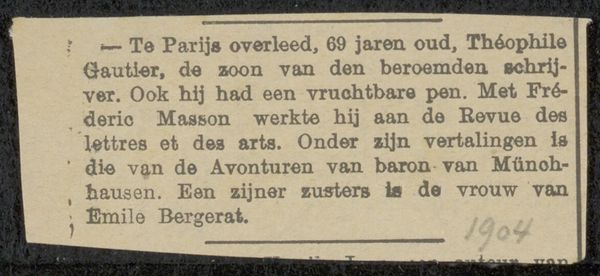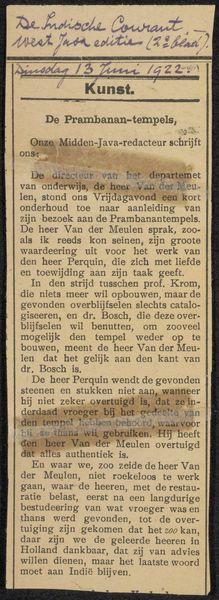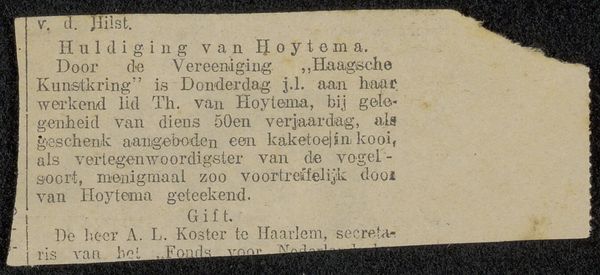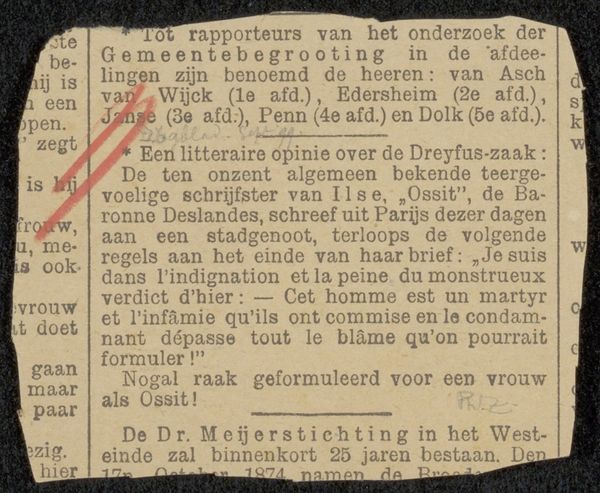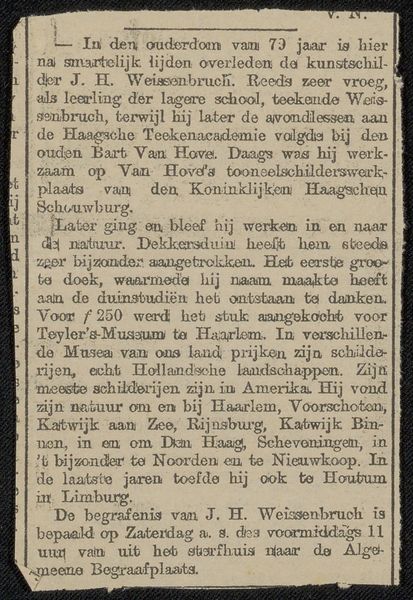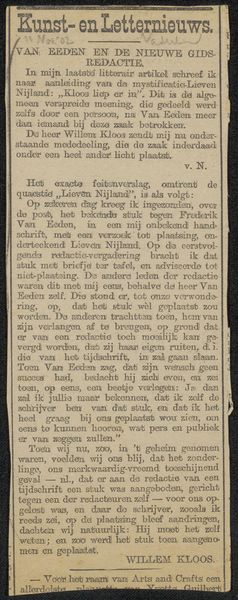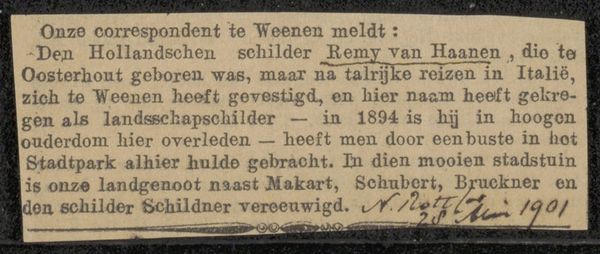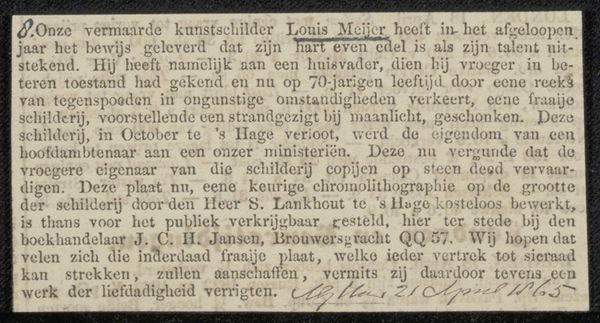
print, paper, typography
# print
#
paper
#
typography
Copyright: Rijks Museum: Open Domain
Curator: This is a newspaper clipping titled "Krantenknipsel betreffende Frans Stracké," dating possibly from 1883-1884. It’s typography on paper. Editor: It feels ephemeral. I mean, it's just a scrap of paper. What’s so special about it that it ended up in the Rijksmuseum? Curator: Exactly. What labor went into creating this seemingly insignificant object? Consider the material reality: the felling of trees to make the paper, the mechanical process of printing, the distribution networks of the newspaper. This "ephemerality" is key. The paper would be low grade, likely made from esparto grass and rags and pulped by machine. What did newspapers like Algemeen Handelsblad mean to the masses in Amsterdam? It was a conduit for political and artistic thought for citizens and merchants, like Twitter is today. How would they consume and pass along these printed bits? Editor: I see what you're getting at. So, this isn't just about the information it conveys, but the whole system of production and consumption around it. How does focusing on the medium, rather than the content, change our understanding? Curator: It makes us ask different questions. What other scraps would fill trash cans and light the fires of the era? Now we see not just news, but value in the commodity as a means of connection. It’s also evidence of a burgeoning mass media. Notice how typography standardized fonts to project ideas rapidly and with scale in mind. Editor: So, by looking at the materials and the process, we're actually getting a glimpse into the everyday life and the social structures of the time. Curator: Precisely. It's about decentering the "art object" and considering its broader context within the industrial revolution and an increase in social literacy through print and availability to access art. Editor: I never thought of it that way before. I always looked at art as these precious, isolated objects. Now I see the importance of considering its creation in an open setting and society's labor. Curator: Hopefully, this has given you new tools for your toolkit to appreciate the creation and material surrounding objects.
Comments
No comments
Be the first to comment and join the conversation on the ultimate creative platform.



